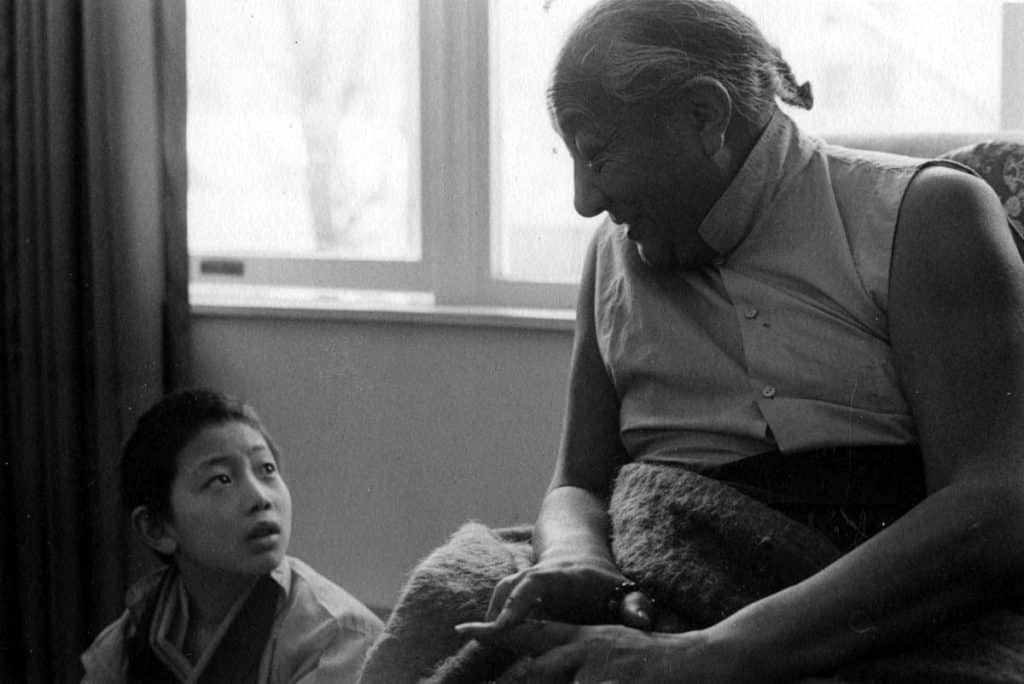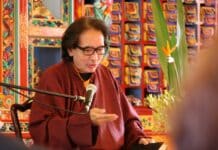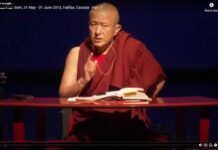In this interview, Rabjam Rinpoche recalls:
- early memories of hearing Trungpa Rinpoche’s name,
- seeing Trungpa Rinpoche’s photo on Dilgo Khyentse Rinpoche’s shrine,
- traveling with Dilgo Khyentse Rinpoche to visit Trungpa Rinpoche in North America in 1976 and again in 1982 (at the age of 10 and 17 respectively),
- witnessing Trungpa Rinpoche share his Shambhala terma with Dilgo Khyentse Rinpoche, and bestow a blessing empowerment for Dilgo Khyentse Rinpoche, Orgyen Tobgyal Rinpoche, and Rabjam Rinpoche,
- attending the Sakyong empowerment in 1982 in Boulder*,
- Chime Rinpoche’s comments about how studying with Khenpo Gangshar prepared Trungpa Rinpoche and other lamas to teach in the West,
- and a memorable helicopter ride with Trungpa Rinpoche to Shambhala Mountain Center.
*Dilgo Khyentse Rinpoche performed the Sakyong Empowerment at Karma Dzong (AKA: the Shambhala Center) in Boulder in 1982. This ceremony established Chögyam Trungpa Rinpoche as the Sakyong and Lady Diana Mukpo as the Sakyong Wangmo. The ceremony included the presentation of ceremonial clothing, jewelry, and medals; and concluded with remarks by Trungpa Rinpoche regarding the significance of the ceremony, his dedication to establishing Shambhala society, and the responsibility of his Western students to carry out this work.











